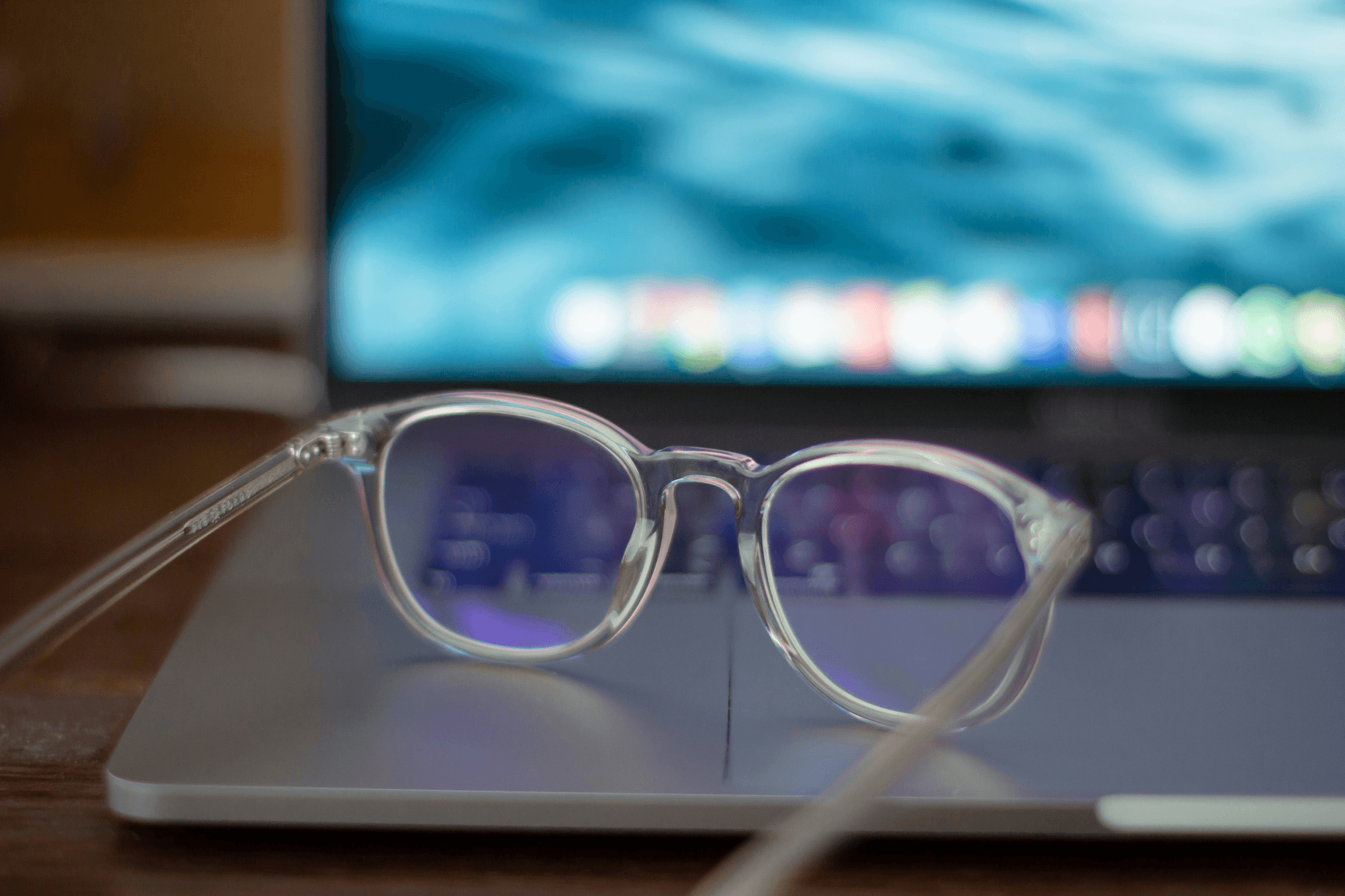Introduction

In our increasingly digital world, understanding the nuances of eyewear is essential for maintaining optimal eye health. With so many options available, it can be challenging to determine whether readers or computer glasses are right for you. This guide will explore the differences between these two types of eyewear and help you make an informed choice.
Understanding Readers and Computer Glasses
Readers are specialized eyeglasses designed primarily for close-up tasks such as reading or sewing, while computer glasses cater to the needs of those who spend extended hours in front of screens. The growing prevalence of devices has led to a surge in demand for both types, but each serves a distinct purpose. When considering readers vs computer glasses, it's crucial to understand how your visual needs change depending on the activity at hand.
The Importance of Eye Health
Eye health is often overlooked until discomfort arises, making it vital to prioritize proper eyewear choices early on. Prolonged exposure to screens can lead to eye strain and digital fatigue; hence having the right pair of eyeglasses for computer screen use becomes paramount. By addressing these concerns proactively with suitable prescription glasses for computer use or appropriate readers, you can significantly enhance your visual comfort and overall well-being.
Choosing the Right Eyewear
Selecting between readers and computer glasses involves assessing your daily activities and visual demands. If you're frequently switching between reading materials and screen time, you might find that eyeglasses for reading and computer tasks blend functionality seamlessly into your routine. Ultimately, ensuring that you have the right pair—whether it’s glasses to use for computer work or dedicated readers—can elevate your experience significantly.
What Are Readers?

Definition and Purpose of Readers
Readers are specialized eyeglasses crafted to aid individuals with presbyopia, a common age-related condition that makes it difficult to focus on nearby objects. The primary purpose of these glasses is to magnify text, allowing users to read comfortably without straining their eyes. Unlike computer glasses designed for prolonged screen use, readers focus on short distances—perfect for books, menus, and other printed materials.
When to Use Readers
You should reach for your readers whenever you find yourself squinting at small print or holding reading material at arm's length. They come in handy during activities like reading newspapers, knitting patterns, or even browsing through recipes while cooking. If you find yourself frequently experiencing eye strain during these tasks, it's time to consider investing in a quality pair of eyeglasses for reading and computer use.
Common Types of Readers
Readers come in various styles and strengths tailored to individual needs—think about them as the Swiss Army knife of eyewear! You have your standard over-the-counter options available at drugstores and online retailers, which cater to different magnification levels (typically ranging from +1.00 to +3.50). For those seeking something more personalized, prescription readers offer customized lenses that can be made specifically for your vision requirements; this is especially beneficial if you also need prescription glasses for computer use.
What Are Computer Glasses?

Definition and Purpose of Computer Glasses
Computer glasses are specially designed eyewear aimed at reducing eye strain and enhancing visual comfort during extended periods of looking at screens. Unlike traditional eyeglasses or readers, which are primarily meant for reading printed material up close, computer glasses focus on optimizing your vision at the intermediate distance typical when using a computer or other digital devices. Their primary purpose is to alleviate symptoms associated with digital eye strain, such as headaches, blurred vision, and dry eyes.
Key Features of Computer Glasses
One of the standout features of computer glasses is their lens design, which often incorporates blue light blocking technology that helps protect your eyes from harmful blue light emitted by screens. Additionally, these lenses may have anti-reflective coatings that minimize glare and improve clarity while working on a computer screen. Many options also come with adjustable prescriptions tailored specifically for those who require vision correction while using computers—making them an essential tool in the readers vs computer glasses debate.
Key Differences Between Readers and Computer Glasses

When it comes to eyewear, understanding the distinctions between readers and computer glasses is crucial for maintaining optimal eye health. Each type of eyewear serves a unique purpose tailored to specific visual needs, especially in our increasingly digital world. Let's dive into the key differences that set these two options apart.
Lens Design and Technology
The lens design for readers vs computer glasses varies significantly to cater to different tasks. Readers are typically designed with magnifying lenses that help individuals see small text up close, making them perfect for reading books or menus. In contrast, computer glasses feature specialized coatings and designs aimed at reducing glare from screens and optimizing focus at intermediate distances, which is essential when working on computers.
Computer screen glasses often incorporate blue light filtering technology that helps mitigate the effects of prolonged exposure to digital devices. This feature is absent in most standard readers, which may lead to discomfort during extended screen time. Therefore, if your daily routine involves staring at a computer screen for hours on end, investing in eyeglasses for computer screen use is a wise choice.
Prescription vs. Non-Prescription
Another significant difference lies in whether the eyewear is prescription or non-prescription. Readers are frequently available over-the-counter as non-prescription options; they offer convenience but may not address specific vision issues like astigmatism or nearsightedness effectively. On the other hand, prescription glasses for computer use can be tailored specifically to your unique visual requirements.
Many people find they need a combination of both types of eyewear—readers for close-up tasks like reading books or magazines and prescription computer glasses for work-related activities on screens. This dual approach ensures you have the right tools at your disposal regardless of what you're doing throughout the day. So whether you opt for non-prescription readers or invest in custom-made eyeglasses for reading and computer tasks, knowing your needs is paramount.
Ideal Viewing Distances
Lastly, understanding ideal viewing distances can help clarify why readers vs computer glasses serve different purposes effectively. Readers are typically optimized for short-range viewing—think about 12-18 inches away—which makes them perfect companions when you're indulging in a good book or engaging in craftwork requiring fine detail attention.
In contrast, computer glasses are designed with intermediate viewing distances in mind—usually around 20-30 inches—making them better suited for those long hours spent typing away at a keyboard or scrolling through endless emails on your monitor. The right pair of glasses can significantly alleviate eye strain by ensuring you're looking through lenses designed specifically for how far away your screen sits from you.
Health Considerations with Eyewear

In today's digital age, understanding the health considerations related to eyewear is crucial for maintaining optimal eye comfort and clarity. With the increasing time spent in front of screens, whether using readers or computer glasses, it’s essential to be aware of issues like eye strain and digital fatigue. This section explores these concerns and provides insights into how you can protect your eyes while enjoying your favorite activities.
Eye Strain and Digital Fatigue
Eye strain is an all-too-common issue faced by those who frequently switch between reading materials and computer screens. Prolonged use of eyeglasses for reading and computer tasks can lead to discomfort, headaches, and blurred vision—symptoms often referred to as digital fatigue. Whether you're debating between readers vs computer glasses or simply trying to find the right pair for your needs, recognizing the signs of eye strain is vital for timely intervention.
To alleviate discomfort, consider taking regular breaks using the 20-20-20 rule: every 20 minutes, look at something 20 feet away for at least 20 seconds. Additionally, ensure that your workspace is well-lit to reduce glare on your computer screen glasses or any other eyewear you may be using. By being proactive about eye health with appropriate glasses to use for computers and reading tasks alike, you can significantly improve your visual comfort.
Protecting Your Eyes from Blue Light
In our tech-driven world, exposure to blue light emitted from screens has become a significant concern regarding eye health. Blue light can contribute to eye strain and disrupt sleep patterns when viewed before bedtime—making it essential for users of prescription glasses for computer use or readers alike to seek protection against this harmful light spectrum. Computer screen glasses often come equipped with blue light filtering technology designed specifically to combat these effects.
When selecting eyeglasses for reading and computer work, look for lenses that offer blue light blocking features without compromising clarity or color perception. With options available in both prescription formats as well as non-prescription versions, there’s no reason not to invest in protective eyewear tailored specifically for prolonged screen exposure. Ultimately, safeguarding your eyes from blue light ensures a more comfortable viewing experience while reducing long-term risks associated with excessive screen time.
Recommendations from Experts
Experts recommend evaluating personal visual needs when deciding between readers vs computer glasses; what works best will vary depending on individual circumstances such as age and daily activities involving screens or printed materials. For those who spend significant time working on computers but also need assistance with reading small text in books or documents, considering specialized eyeglasses that cater specifically to both functions might be beneficial—think of them as a two-for-one deal!
Additionally, consulting an optometrist can provide tailored advice based on lifestyle habits; they may suggest specific lens coatings or designs that enhance comfort during extended use of either type of eyewear. Don't shy away from trying out different pairs until you find one that feels just right—after all, investing in proper eyewear isn't just about style; it's about ensuring long-term health benefits too!
Choosing the Right Eyewear for You

Selecting the right eyewear can feel like navigating a maze, especially when you're faced with the decision between readers and computer glasses. Understanding your visual needs is crucial in making this choice, as it directly impacts your comfort and efficiency while reading or working on a computer. Whether you need eyeglasses for reading and computer use or specific prescription glasses for computer use, taking time to assess these needs will pay off in the long run.
Assessing Your Visual Needs
To determine what type of eyewear is best for you, start by evaluating how you use your eyes throughout the day. If you find yourself squinting at small text or struggling to focus on a screen, it might be time to consider both readers vs computer glasses. Think about your daily activities: do you spend more time reading physical books or working on a computer? This assessment will help clarify whether glasses to use for computer tasks are necessary or if traditional eyeglasses for reading suffice.
Additionally, consider any symptoms of eye strain or discomfort you've experienced recently. If you're often dealing with headaches after long hours at your desk, it may indicate that specialized computer screen glasses could enhance your experience significantly. Keep track of when these symptoms arise; they can provide valuable insights into which type of eyewear will best meet your needs.
Trying Out Different Options
Once you've assessed your visual needs, it's time to explore various options available in the market. Many retailers offer trial periods where you can test different styles and types of eyewear before committing to a purchase—this is especially useful when comparing readers vs computer glasses. Trying out different pairs allows you to gauge comfort levels and see how well each option performs during daily tasks.
Don't shy away from experimenting with various lens technologies as well! For instance, some glasses designed specifically for computer use feature anti-reflective coatings that minimize glare from screens—perfect if you're spending hours in front of digital devices. Remember that what works for one person might not work for another; finding the right fit may take some trial and error.
Seeking Professional Advice
When all else fails—or even before diving into options—consider consulting an eye care professional who can guide you through choosing between readers and computer glasses effectively. They can provide personalized recommendations based on comprehensive eye exams tailored to assess both near vision (for reading) and distance vision (for screen use). Their expertise ensures that you'll end up with eyeglasses suited perfectly for both reading and working on computers.
Moreover, professionals can also help identify any underlying issues contributing to eye strain or discomfort during prolonged hours at screens—issues that simple over-the-counter solutions may not address adequately. Prescription glasses specifically designed for computer use may be necessary if standard options aren't cutting it! So don't hesitate; seeking professional advice is often worth its weight in gold when it comes down to protecting our precious peepers!
Conclusion

In navigating the world of eyewear, understanding the differences between readers vs computer glasses is crucial for maintaining optimal eye health. The right eyewear not only enhances your vision but also alleviates discomfort associated with prolonged screen time and reading. By selecting eyeglasses tailored to your specific needs, you can enjoy clearer vision and a more comfortable viewing experience.
Benefits of Using the Right Eyewear
Using the appropriate eyewear can significantly reduce eye strain, especially when distinguishing between readers and computer glasses. Readers are designed primarily for close-up tasks like reading, while computer glasses cater to the unique demands of digital screens, helping to filter blue light and reduce glare. Choosing the right pair can enhance productivity and comfort during long hours spent in front of a computer screen or with books.
Aligning Your Eyewear with Lifestyle Needs
It's essential to align your eyewear choices with your daily activities to get the most out of them. For instance, if you frequently switch between reading and working on a computer, consider investing in eyeglasses for reading and computer use that offer versatility. This ensures that whether you're enjoying a novel or tackling spreadsheets, you have the best possible vision support tailored to your lifestyle.
How Daposi Eyewear Enhances Your Experience
Daposi Eyewear stands out by offering stylish options that cater specifically to both readers vs computer glasses needs without compromising on aesthetics or functionality. With advanced lens technology designed for comfort during extended use, their collection includes prescription glasses for computer use that effectively combat digital fatigue while looking chic. By choosing Daposi, you’re not just improving your vision; you’re enhancing your overall experience in both work and leisure.
